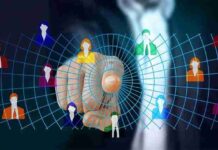
HR Gen AI: A Silent Revolution From Fantasy To Reality
I have always been fascinated by “Chitragupta” from Indian mythology. Chitragupta is responsible for recording all our actions, good and bad, across lifetimes, and delivering a verdict on doomsday. I often visualised his office, filled with extensive files containing records of our deeds, relationships, and behaviour.
Interestingly, I see parallels between Chitragupta’s role and the HR department in organisations. HR departments, the custodians of employee data, play a crucial role in monitoring and intervening to ensure organisational well-being, especially in today’s VUCA (Volatility, Uncertainty, Complexity, Ambiguity) world.
Generative AI (gen AI) is a valuable asset for HR, aligning people, processes, and performances in real-time to achieve organisational goals. It’s akin to Aladdin’s magical lamp and his Genie, empowering HR 24/7. Generative AI has turned fantasy into reality, and it’s time to explore its impact in the real HR world.
When speaking about the real HR world, let us remember that HR as a function today is a strategic department that guides boards to adopt scientific management principles to instill better productivity. Unfortunately, many perceive it as a cost-center and even question it based on direct revenue-generating potential.
As such, HR may be perceived by many as any other department – at best a noun. Such a perspective may appear flawed at first, but even that has dissipated considering the silent revolution that has brewed in the practice. With this revolution, the department has metamorphosed into becoming an action-oriented, highly agile, and truly tactical function of the organization. In simpler words, a verb.
CATALYSTS OF CHANGE
Today, the extent of functions that HR as a department oversees is as end-to-end and as industrious as a well-oiled industry. This transition has been made possible thanks to the availability of several techniques, processes and technologies.
While there have been countless definitions of what HR should do strategically and tactically, a former mentor provided a formula that resonates with a strong value proposition. The mathematical formula looks as follows:
5Gs of HR = Right People x [Get + Give + Guide + Guard + Govern]
This formula encapsulates the HR-function lifecycle across key roles: manpower planning & talent acquisition, total rewards management, onboarding & learning & development, performance management, talent management, and compliance & policy administration.
While the roles may seem expansive and exhaustive, the availability of data has acted as a major catalyst in enabling the function. How has the availability of data helped HR? Well, the benefit is similar to the scene from the penultimate goal from the movie Chak De India.
Shahrukh Khan, who plays the role of the coach in the movie, uses all his experience (intuition, data, and insights) to share invaluable insight with the goalkeeper holding her position. And the rest, as they say, is history.
HR departments may have traditionally relied upon intuition and anecdotal evidence for many decisions. The availability of data storage tools and the advent of HR analytics tools have empowered us to make decisions grounded in empirical data.
THE CHERRY ON TOP
The cherry on top has been the emergence of Generative AI. Gen-AI has made it a reality in achieving the tenets of 5Gs in HR. A subset of AI, Gen-AI involves algorithms that enable managing that end-to-end process ranging from recruitment and onboarding to employee engagement and performance management. Unlike traditional AI, which follows predefined rules, Gen-AI learns patterns and structures from data to create unique outputs.
Gen-AI has streamlined and automated several HR processes. For instance, in recruitment, tasks such as job description creation, resume screening, and interview scheduling have been automated. Gen-AI-enabled features such as parsing assist recruiter in updating all necessary information automatically in the RCM platform which helps in tracking any application through an ATS (Application Tracking System) methodically.
Since 2018, Sterling and Wilson’s MEP O&M Business has effectively onboarded over 15,000 individuals through their streamlined and paperless onboarding process, saving approximately 5 Lac A4 size paper sheets resulting in the protection of 45 feet fully grown 60 pine trees, 3,750 man-hours, and 50 lakh litres of water. Additionally, with tools such as Genie HR, HR has turned into a strategic business partner, facilitating the organisation to make data-driven and informed decisions.
Compared to its predecessors, Gen-AI has enhanced competency management, a critical role of the HR function. It can intelligently identify skill gaps and suggest a personalized development plan. In payroll, Gen-AI ensures accuracy and efficiency, handling complex calculations, currency-based pay-outs, and compliance with diverse legal frameworks seamlessly. This reduces the administrative burden, improves compliance, and minimizes errors.
Furthermore, Gen-AI helps HR stay compliant with central, state, and international laws by continuously monitoring regulatory changes and ensuring policies and practices align with the latest requirements. These capabilities streamline HR operations, improve employee satisfaction, and enable more strategic, data-driven decision-making, although they require careful implementation to address potential biases and data privacy concerns.
In conclusion, let me state that it is a debatable topic whether Gen AI may render some current roles obsolete within the department. However, it simultaneously opens the door to new opportunities for those ready to harness and master this technology.
It is crucial for the betterment of both our organization and humanity that we encourage a harmonious coexistence between traditional roles and emerging ones. By doing so, we can leverage the full potential of Gen AI, ensuring progress and innovation while maintaining a balanced and thriving workforce.








